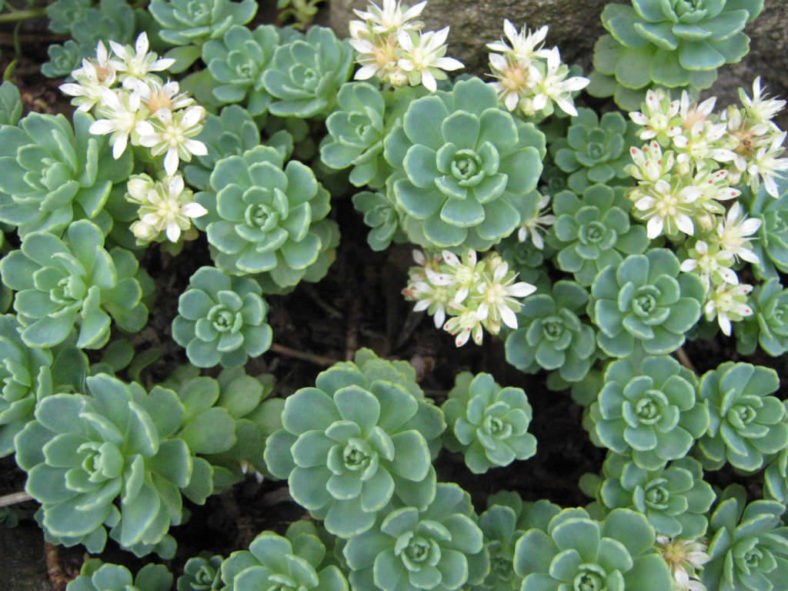Scientific Name
Rhodiola pachyclados (Aitch. & Hemsl.) H. Ohba
Common Name(s)
Gray Stonecrop, Silver Gem Stonecrop
Synonym(s)
Rhodiola primuloides var. pachyclados, Sedum pachyclados
Scientific Classification
Family: Crassulaceae
Subfamily: Sempervivoideae
Tribe: Umbiliceae
Genus: Rhodiola
Etymology
The specific epithet "pachyclados" (pronounced "pak-ee-klad-ohs") means "thick-branched" and most likely refers to the rhizomes of this species, which develop into thickened, woody branches as they age.
Origin
Rhodiola pachyclados is native to the mountains of Pakistan and Afghanistan. It grows at altitudes between 8,000 and 11,000 feet (2,440 and 3,350 m).
Description
Rhodiola pachyclados, formerly known as Sedum pachyclados, is a lovely succulent with small, tight rosettes of blue-green leaves with crenulated margins. It spreads by slender rhizomes, slowly forming a mat or lovely hummocks. The leaves are ovate and can measure up to 0.4 inches (1 cm) long and 0.25 inches (0.6 cm) wide.
Clusters of white flowers appear in summer.

How to Grow and Care for Rhodiola pachyclados
Hardiness: USDA hardiness zones 4a to 9b: from -30°F (-34.4°C) to 30°F (-1.1°C).
When growing Sedums, keep in mind that these plants need very little attention. They will thrive in conditions in which many other plants thrive, but do just as well in less hospitable areas. They are ideal for that part of your yard that gets too much sun or too little water to grow anything else. Sedum is commonly called Stonecrop because many gardeners joke that only stones need less care and live longer.
Sedum is easily planted. For shorter varieties, laying the plant on the ground where you want it to grow is usually enough to start it there. They will send out roots from wherever the stem touches the ground and the root itself. If you would like to ensure further that the plant will start there, you can add a very thin covering of soil over the plant.
You can break off one of the stems for taller varieties and push it into the ground where you want to grow it. The stem will root very easily, and a new plant will be established in a season or two.
Learn more at How to Grow and Care for Sedum.
Links
- Back to genus Rhodiola
- Succupedia: Browse succulents by Scientific Name, Common Name, Genus, Family, USDA Hardiness Zone, Origin, or cacti by Genus
Photo Gallery
Click on a photo to see a larger version.


